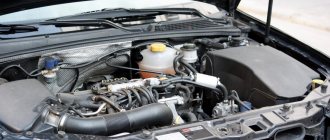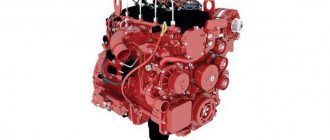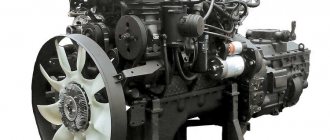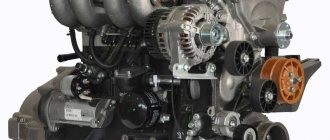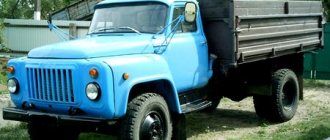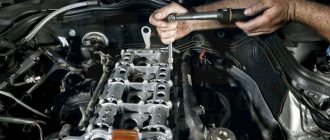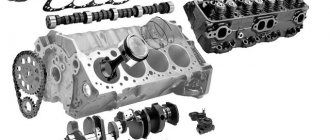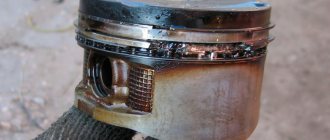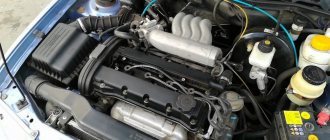Modernization
Engine tuning includes various operations to improve performance. In the A15SMS, it is more useful to first carry out work on the cylinder head - as mentioned above, due to a broken belt, the valves are damaged.
The first step for this is the following cycle of events.
Classic atmospheric tuning for A15SMS engines also involves modifications to the intake tract. The best solution is to install a sports Borman Receiver Intake. It costs approximately 400-500 dollars. This receiver will help improve the dynamics at the bottom, increase the agility of the engine, and add traction at high speeds. And if you add a large fuel rail costing $100-200, you can significantly increase the technical characteristics of the power unit.
Source
A little history of Daewoo Nexia
The ancestor of the Daewoo Nexia car was the well-known Opel Cadet E, which was produced by a German company from 1984 to 1991. At first, Nexia was produced in Korea under the name Daewoo Racer, and its production continued until 1995. For some time, large-scale assembly of the Nexia was carried out in Krasny Askai, Rostov region, but in 1998, production of the car was discontinued.
The main production of Daewoo Nexia was established in Uzbekistan in the city of Asaka, the first cars rolled off the assembly line in 1996. Almost immediately the car began to be exported to Russia, and in 2008 Nexia underwent a slight restyling:
There were still very minor external changes, but overall the car remained recognizable and differed only slightly from the pre-restyling Nexia.
The first Uzbek Nexias came in two trim levels:
The basic equipment was very simple, sometimes it did not even include power steering. In the GLE version, the car was equipped with additional options:
Daewoo Nexia | DOHC 16 valve engine
4.3.1 DOHC 16 valve engine
The cylinder block and parts located in the cylinder block of the DOHC engine are basically the same as the OHC 2.0L engine. The difference is that the pistons are attached to the connecting rods with floating-type piston pins and secured with retaining rings. The camshafts on DOHC engines are driven from the crankshaft by a single timing belt. Each cylinder has a...
4.3.8 Removing, checking and installing camshafts
Warning When installing camshafts, use a new toothed belt. Removal PERFORMANCE ORDER 1. Remove the toothed belt. 2. Unscrew the two screws and remove the ignition distributor cover. Disconnect the crankcase ventilation hoses...
4.3.14 Removing and installing the flywheel
PERFORMANCE ORDER 1. Remove the clutch. 2. Using a marker or paint, mark the location of the flywheel in relation to the crankshaft. Using the teeth of the flywheel ring gear, secure the flywheel from turning and unscrew the flywheel mounting bolts. ...
4.3.17 Checking engine components
See the appropriate description in subsection 4.1.16.1, subsection 4.1.16.2, subsection 4.1.16.3, subsection 4.1.16.4, subsection 4.1.16.5, subsection 4.1.16.6, subsection 4.1.16.7, taking into account the following additional information. CAMSHAFTS PERFORMANCE ORDER 1. Remove the camshafts...
4.3.18 Removing and installing the engine
Removal PERFORMANCE ORDER 1. The engine is removed together with the gearbox from the engine compartment. 2. Disconnect both terminals from the battery. 3. Relieve pressure in the fuel system. 4. Remove the hood. ...
4.3.19 Starting the engine after a major overhaul
PERFORMANCE ORDER 1. See the corresponding description in subsection 4.1.19, but ignore the information about checking the idle speed and adjusting the valve clearances. 2. If new camshafts were installed, run them in...
Basic Daewoo engine malfunctions
Statistics show that motorists most often encounter the problem of difficulty starting the engine or the engine does not function at all. The engine may not start due to a lack of fuel in the carburetor or a malfunction of the carburetor starting device. If with the second everything is extremely simple - you need to replace the damaged parts, then with the lack of fuel in the carburetor the situation is somewhat more complicated. It is necessary to blow out the fuel lines, wash or replace the fuel filter and check the functionality of the pump.
Unstable starting of a hot or cold engine is associated with:
- Violation of idle speed adjustment;
- Carburetor malfunction.
A carburetor malfunction may be due to clogged channels (it is necessary to blow out the channels), water in the carburetor (remove liquid by draining the sludge from the fuel tank), air leaks (check the hose for damage, tighten all nuts or replace the gasket).
Other reasons also play an important role, in particular:
- Incorrect actions when starting a gasoline engine;
- Incorrect actions when starting a diesel engine;
- Low compression in the engine cylinders.
Daewoo Nexia engine 8 valves
At first, the Daewoo Nexia powertrain lineup included a single 1.5-liter gasoline engine. The engine had a power of 75 hp. pp., in-line arrangement of four cylinders.
The G15MF engine is an 8-valve engine, with one intake and exhaust valve per cylinder; in many ways it is very similar to Opel’s C16NZ internal combustion engine. Despite the apparent external similarity, Opel and Nexia engines have significant differences, and on the G15MF engine:
There are also a number of design differences that do not allow the installation of parts from the C16NZ engine on the G15MF engine. In particular, Nexia has its own distributor, and it does not fit any Opel.
The Daewoo Nexia 1.5 engine has the following characteristics:
Despite the fact that the Daewoo Nexia 1.5 engine has 8 valves, a car with it can develop quite a decent speed (up to 175 km/h) and accelerate to 100 kilometers in 12.5 seconds. In city mode, fuel consumption with the G15MF engine averages 9.3 liters per 100 kilometers, on the highway outside the city - 7 l/100 km, and during dynamic driving, gasoline consumption increases.
The Nexia 8-valve engine is very reliable, and if you care for it properly (do not overheat, do not overload, change the engine oil on time), then the engine can travel more than 200 thousand kilometers without major repairs. It should be noted that some car owners did not spare the engine in their car at all:
If you remove the oil filler cap from such a “dead” engine, you can immediately see blackness on the camshaft, which is formed from low-quality oil. However, even such motors miraculously survived, and this shows how reliable they are.
Daewoo Nexia Led Star › Logbook › Engine overhaul part 1
For about a year now I have been adding oil about a liter every 2000-3000 km. Despite the fact that the car did not smoke. Since two years ago I changed the valve stem seals and it did not give any results, I decided to climb into the block, remove the piston and look at the valve stem rings. I thought about this probably back in September last year and until this month I was buying spare parts, consumables and other crap. In the end, I was glad that I didn’t disassemble it in winter in January, because based on the results below, I would have been freaking out from the cold.
Well, let's go in order, let's look at it:
As you can see, the candles were sooted around the edges, someone told me that this was all normal, but I didn’t believe it, and in the end it was not in vain.
Just like 2 years ago, the color of the varnished metal was and is! Everything seems to be as it is.
This is where all the good things end, alas... Having torn off the head, I looked into the cylinders and saw what was amazing, everything was covered in severe soot, karosts and other oil deposits. Although 2 years ago there was a photo in the blog about how everything was clean there
Over the 4 years of operation, I changed the antifreeze exactly 2 times. But before me they poured either water or some kind of crap that clogged up all the holes in the cylinder head gasket and it looks like there’s all this rust in the stove, now I think it needs to be changed too. Having removed all the liquid from the canals using an enema, I began cleaning the top of the block.
Having unscrewed the pan and barely torn it away from the existing sealant, he unscrewed the connecting rod caps and began to remove the piston.
Well, actually the diagnosis is obvious
The compression rings were still rotating, but the oil scraper rings were firmly stuck in the piston groove.
The whole thing was put into cylinders and left to soak overnight in gasoline/kerosene.
The next day, my friend and I decided to pull the pump out of place; as is known in Nexia, it fits smoothly and is tightened with only 3 bolts. But that was not the case, the gas wrench and a special wrench machined for 41 jaws did not give any results, the pump was sitting tightly in the block. We thought for a long time about what to do, and in the end, having removed the supply pipe into the pit with blows of a hammer through the extension, the pump flew into the pit. The result is obvious. The only conclusion is “continue” to give up on routine fluid replacement!
The day continued with very fun work when I took out a piston that had been lying in kerosene and gasoline - I didn’t want to clean it, it was impossible to rub it until I was stupid with a metal brush. Therefore, based on topics on the Internet, I decided to use ACC household chemicals for cleaning gas stoves - SCHUMANIT. 300 rubles per bubble.
This product is written not to be used for aluminum, but it is understandable, shumanit oxidizes aluminum, but this did not stop me. And 4 hours for 4 pistons and lo and behold, all the oil crap just came off with a bang!
During the cleaning breaks, for a change of work, I took up the correct installation of the heating. Installation kit No. 1301 was purchased. According to the instructions, he assumed installing the outlet pipe into a fitting installed in the plug of the cylinder block. I’ll tell you one thing: the photo shows what is in the engine compartment now and what is not. And I’ll say that, as they say, it’s easy to remove the block plug - FUCK IT. I spent half an hour twisting, prying and unrolling it through the upper channel of the block. But the operation was a success and the fitting was installed!
By the evening of May 1, the cleaning work was completed. In the morning of the same day, my friend and I stopped at the car market. I kept thinking about using a beer can and a clamp to rig the installation of the rings. But in the store I found a special mandrel, the money was only 440 rubles. I didn’t bother and bought it, and as I realized it was not in vain, it’s not just convenient, but downright fucking convenient.
Daewoo Nexia engine (G15MF, A15MF, A15SMS, F16D3 and B15D2): characteristics, malfunctions and tuning
Nexia valve, whether it bends or not on the 16 valve.
You can note a fairly common problem with the ever-flowing valve cover gasket.
Characteristics of daewoo nexia engine G15MF The Daewoo Nexia engine reaches speeds of up to hundreds of km/h, accelerates in…
In addition, both power units began to be equipped with a lambda probe and a catalytic converter, which allowed them to meet the requirements of the EURO 2 standard. Replacing bushings and rods, which will cost rubles, will solve this problem.
Photo report on engine repair 8 cl
Greetings to everyone who is interested in my topic! in it I will tell and show how I repaired the engine at 200,000 km! I WANT TO WARN IMMEDIATELY that the report is not very informative, because it was cool, and I didn’t want to spend extra time on photography
Yes, I did such a serious repair half a year ago, and also for the first time in my life (before that I only had to replace the brakes and grenades)
it all started with the camshaft (an urgent replacement was required), and as always, more to come
So, what has been done: replaced: camshaft, camshaft seal, connecting rod bearings, piston rings, valve stem seals; gaskets: cylinder head, valve cover, pan; all rockers (except one), spark plugs, filters: air, oil; Well, of course, oil, antifreeze and now everything is in order, LET'S GO.
Tools used: all kinds of wrenches (open-end wrenches, socket wrenches, sockets, torque wrench, desiccant, hammers, brushes, tweezers, of course, something else (I just don’t remember)
first of all, jack it up higher (it’s better to do everything in the pit)
drain the oil, antifreeze, remove all hoses, tubes, wires, the air filter along with the intake, box and corrugation so as not to interfere, unscrew everything that is screwed to the engine (I won’t describe it, everything is instinctively clear, the cylinder head and valve cover mounting bolts are in in a certain order (the order is indicated in the books, I can’t write because I lost the book). We remove the valve cover (some people call it the camshaft cover), everything is simple, then the head, preferably together. My friend and I pulled for a long time, pulled, nothing worked, but that’s all because of the invisible bolts holding the intake manifold, here they are (visible from below)
They twisted it, shook it and everything came off. AND
